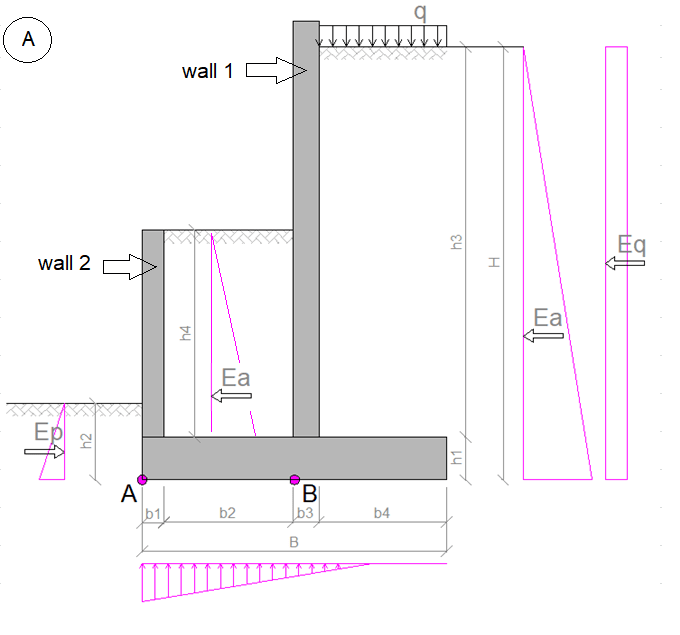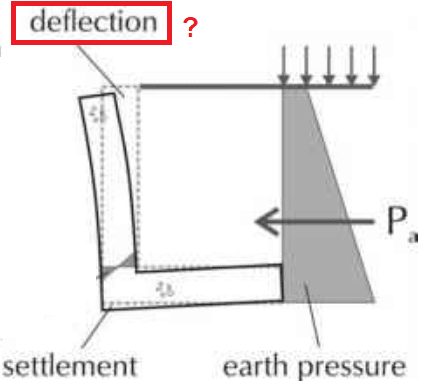Greetings, I have to design a RC retaining wall as shown in the attached image bellow.
Wall 1 is high (4 m above the footing) and wall 2 is shorter (aprox. 2 m above the footing).
I have 2 RC walls on common footing. I was wondering how the earth pressure acts on wall1/wall2?
On wall 1 acts active earth pressure but does this have an impact on the wall 2? Is wall 2 loaded with both earth pressures - from wall 1 and from thr earth pressure between wall 1 and wall 2? Earth pressures depend on displacement of the wall, but what to expect in this case? I dont think there will be passive earth pressure acting on wall 2 because of wall 1 unless wall 1 is really stiff and there wont be any displacement going on there.
What is allowable displacement on the top of the wall (I havent find it in Eurocode 7 or American standards)?
Not my field, hope for some good advices.


Wall 1 is high (4 m above the footing) and wall 2 is shorter (aprox. 2 m above the footing).
I have 2 RC walls on common footing. I was wondering how the earth pressure acts on wall1/wall2?
On wall 1 acts active earth pressure but does this have an impact on the wall 2? Is wall 2 loaded with both earth pressures - from wall 1 and from thr earth pressure between wall 1 and wall 2? Earth pressures depend on displacement of the wall, but what to expect in this case? I dont think there will be passive earth pressure acting on wall 2 because of wall 1 unless wall 1 is really stiff and there wont be any displacement going on there.
What is allowable displacement on the top of the wall (I havent find it in Eurocode 7 or American standards)?
Not my field, hope for some good advices.


